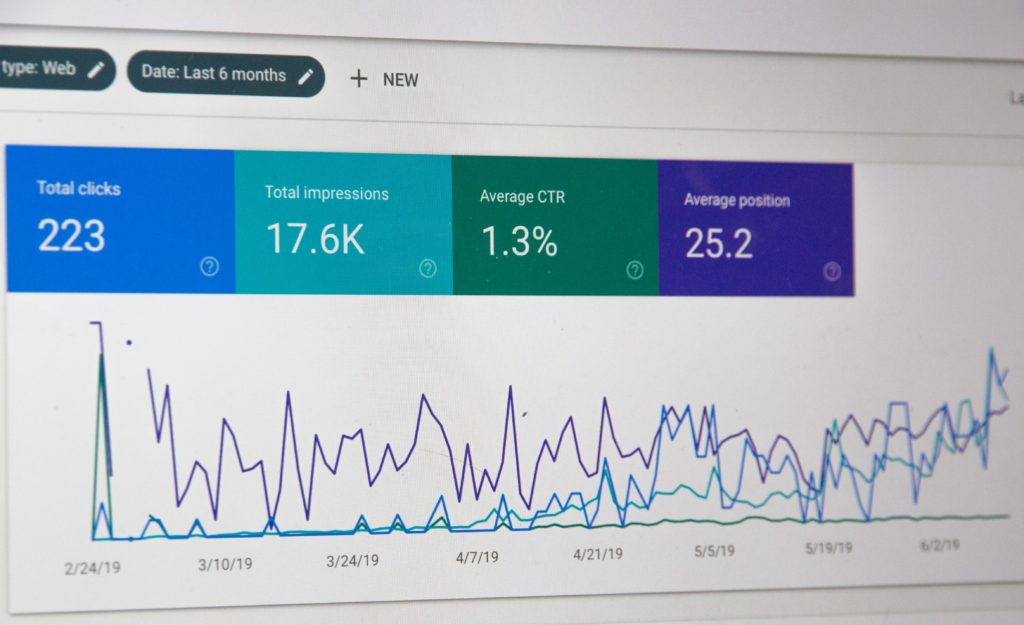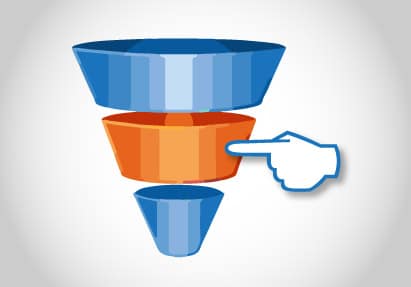There are hundreds of ways to measure the success of your marketing campaigns. From website traffic, bounce rate, opens and clicks, all the way to cost-per-opportunity and ROI. While designing a marketing campaign, it’s important to lay out the measurements of success, to ensure that you achieve your goals. With so much data, where do you begin, and which are the most important?
To select the right metrics to measure it is important to understand your marketing funnel from top to bottom. Often, this exercise highlights areas and gaps that you have that need work, and design your campaigns accordingly.
In this blog, we talk about the key metrics for each area of the marketing funnel, so whether you’re creating an awareness, lead generation or progression campaign you can set yourself up for success.
Top of the Funnel (Awareness)
The top of the funnel is your first point of contact with your potential customers. This is the ‘loud’ part of marketing, and what everybody immediately thinks of. It’s important to make potential customers aware of who you are and what you can do.

Then meet them where they hang out, whether that’s social media or more traditional advertising. The purpose of this part of the funnel is to develop awareness of your business with as many people in your target market as possible.
Key Metrics
In a digital world, the simplest and most effective way to gauge the effectiveness of your awareness campaigns is traffic. The more of the right people who see your content, , the more effective your top of the funnel marketing is. This can be website traffic, if earned by organic search, or impressions on your social posts. With more traditional advertising, such as radio, print, or television, this can be measured by the audience data, and for PPC advertising this is measured in clicks. Most of these traffic metrics are collected straight from web measurement tools such as Google Analytics or social media analytics tools. The aim of generating awareness is to earn the right for more of your audiences ‘headspace’. This means getting them to interact with social media posts (engagement), read a blog post, or click through on an email or advert.
Which metrics you choose depend on your audience and your goals. As a B2B business, Trigg measures web traffic and it’s source, post impressions and engagement, and other metrics like dwell time and bounce rate. For consumer facing brands like Canon, both online and offline metrics are important as well as traditional metrics around brand awareness and recognition.

Mid Funnel (Interest)
Converting people in your target audience from being ‘aware’ of your company to ‘interested’ in your company is a critical point in any sales and marketing function. It’s important to measure how many people become interested, as this ‘conversion rate’ helps to understand how much you’d need to scale to increase leads.
It’s also important to keep an eye on the quality of the people who are interested in your product or service. This is why Salesforce marketing products like Pardot have methods of ‘grading’ as well as scoring leads. For example, a student researching Salesforce consultancies might be scoring very highly, interacting with lots of content and very interested, but they’re not in a buying position.
At this point, it’s important for marketing to ‘nurture’ leads. The point of transfer between sales and marketing differs at every company, but once a potential customer is interested it’s important to maintain that connection. Humans inherently follow what is called the ‘logic sandwich’, which you can’t bypass, so the emotional content that got their attention needs to transition to more robust content. For marketers selling a solution, that means things like whitepapers and webinars, for retailers and media companies that means being clear about price, benefits and easing the path to purchase. Things like product comparisons, case studies, user stories and downloadable content are all key parts of a strong middle of the funnel campaign.
Key metrics
For retailers, the metrics can be things like ‘added to basket’, encouraged by product descriptions, great photography and PDP copy. For media companies, this ‘interest’ can be measured by returning web traffic, content interactions and movement towards purchase dependent on the product or service.
One of the biggest metrics for this is returning traffic. If your website or social media manages to generate prospects who return for more, subscribe to newsletters, download ebooks or post comments then your middle marketing is working well.
Another strong metric for desire especially is how many people search for branded content for your retail or media business on google. This is a relatively simple metric to work out on google adwords but can give clear insight into the quality of the middle of the funnel.
Once people are interested in your product or service, they become leads. When we consult with retail and media companies this bit can get a bit fuzzy, as the transfer and gap between sales and marketing is most apparent. But it’s important to measure conversion rate to leads, the cost for each one, and how many progress to opportunities or close. It’s also important to measure lead source, at both conversion and close, as it indicates which of your marketing tactics are working. It’s also important to work collaboratively with sales management on lead conversion rate to opportunity, to improve enablement and nurture programmes.
Bottom of the Funnel
For a long time there has been a common misconception that marketing is about brand awareness. In reality, marketing should consider all elements of the business, including conversion, ROI, and customer retention.
Bottom of the funnel marketing is all about how successful your brand is at opportunities to customers. As discussed before in our logic sandwich, once a potential customer is a qualified opportunity, it’s important to revert back to emotions, giving them a taste of what it’s like to be part of your ‘club’.

For consulting and software sales, this often takes the form of hospitality events. For retailers, this could be loyalty schemes, brand affinity, social media channels and specific engagement. Community is a key driver here: think Nike Plus, Rapha Cycle club, and the specific in-store benefits you might get. For media companies, it’s about converting and creating subscribers, and the ‘surprise and delight’ you can provide. Often, bottom-of-the-funnel marketing overlaps with customer retention initiatives. Just make sure that you keep the prospect focused on the specific sale you want to make, and the narrative a simple journey to aid your sales efforts.
It might seem that when somebody has got here you’ve done the hard part but converting is key to gaining a return on investment.
Key metrics
These are perhaps the easiest metrics to capture. As the goal of the bottom of the funnel is to turn opportunities to sales then this conversion rate is the strongest metric to show whether your marketing and sales efforts are working. Simply put, if the rest of your funnel metrics are working well but you are not converting opportunities to sales then your bottom of the funnel marketing needs adjusting.
There’s often no point spending lots of money pouring leads at the top of the funnel if you’ve got a conversion problem (a hole in the bucket) at the bottom. Collaboration between marketing and sales, measuring engagement, and sales metrics- ROI- are key. In conclusion
The world of marketing is a vibrant and messy place. It can be difficult to truly understand where your marketing is working or not. This is why carefully capturing metrics is a vital part to your campaigns. If you put all your work into your content and no work into your marketing analysis, you are setting yourself up to fail. However, if you manage to develop a strong grasp of your metrics, even little tweaks to your campaigns can have a monumental impact.
- Latest SFMC features 2021 - June 4, 2021
- The Fundamentals of Marketing Metrics - January 27, 2021
- What is Salesforce Marketing Cloud? - October 6, 2020



